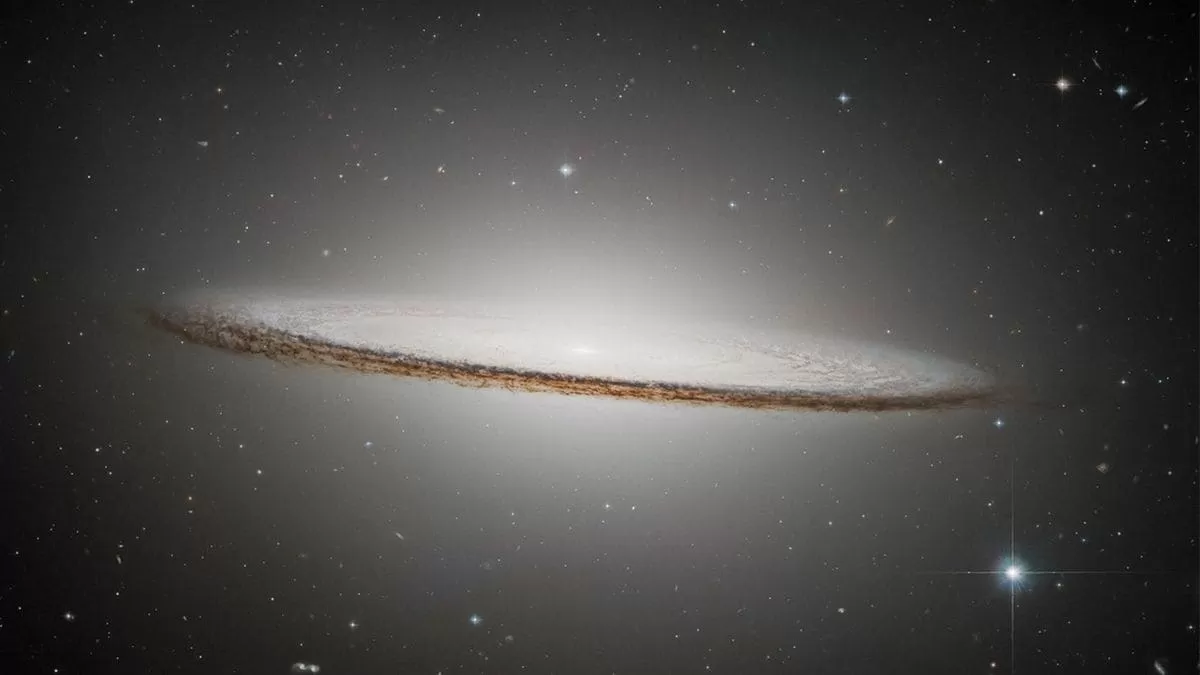NASA’s Hubble Telescope, known for its remarkable discoveries, has once again amazed us with its latest revelation of the Sombrero Galaxy. This stunning galaxy, also known as Messier 104, is a favourite among astronomers due to its rare and unique shape. The recent images captured by Hubble have given us a detailed view of this galactic beauty, shedding light on its formation and composition.
Located 28 million light-years away from Earth, the Sombrero Galaxy is a spiral galaxy with a prominent bulge at its center and a wide, flat disk resembling a Mexican sombrero hat. This distinctive shape has made it one of the most recognizable and intriguing objects in the night sky. It has long been a subject of study for astronomers, and with the help of Hubble’s advanced imaging techniques, we are now able to see it in a whole new light.
In a recent research study, NASA scientists used Hubble’s Wide Field Camera 3 instrument to capture high-resolution images of the Sombrero Galaxy. What they found was truly fascinating – the outer region of this galaxy is rich in metal-rich stars. This means that the stars in this region contain a high proportion of elements heavier than hydrogen and helium. This is a significant discovery because it provides a better understanding of the chemical composition of galaxies and their evolution over time.
One of the researchers involved in this study, Dr. Emily Levesque of the University of Washington, explained that the presence of metal-rich stars in the outer regions of a galaxy is quite rare. Most galaxies tend to have a higher concentration of metal-rich stars near the center. However, the Sombrero Galaxy seems to have a more evenly distributed mix of stars. This suggests that its formation and evolution may have been different from other galaxies.
The advanced imaging technique used by Hubble is called “stacking,” where the telescope takes multiple images of the same object and combines them to produce a sharper and more detailed image. This allowed the scientists to study the outer regions of the Sombrero Galaxy with greater precision. They found that the metal-rich stars in this region were older and redder than the stars in the center, indicating that they were formed earlier in the galaxy’s history.
This new discovery has opened up a whole new realm of research possibilities for scientists. With a deeper understanding of the Sombrero Galaxy’s composition and formation, we can now explore other galaxies with similar features to see if they also have a high concentration of metal-rich stars in their outer regions. This could provide valuable insights into the processes that lead to the formation of these unique galaxies.
The images captured by Hubble also reveal bright, star-forming regions within the Sombrero Galaxy’s dust lanes. These are areas where new stars are born from the gas and dust found in the galaxy. The colors of these regions, ranging from blue to pink, indicate the varying ages of the stars, with younger stars appearing blue and older stars appearing red.
Moreover, Hubble’s images help us to understand the Sombrero Galaxy’s spiral structure, with its tightly wound arms extending outwards from the central bulge. This structure is also responsible for the galaxy’s flat, disk-like shape. By studying the Sombrero Galaxy, we can gain a better understanding of how galaxies, including our own, are formed and evolve over time.
The Sombrero Galaxy is a prime example of the extraordinary discoveries that the Hubble Telescope continues to make. Its iconic shape and rich composition have captivated our imagination for decades, and now, thanks to Hubble, we can see it in unprecedented detail. The future looks bright for further research into this galactic favourite, and we can’t wait to see what new revelations Hubble has in store for us.

